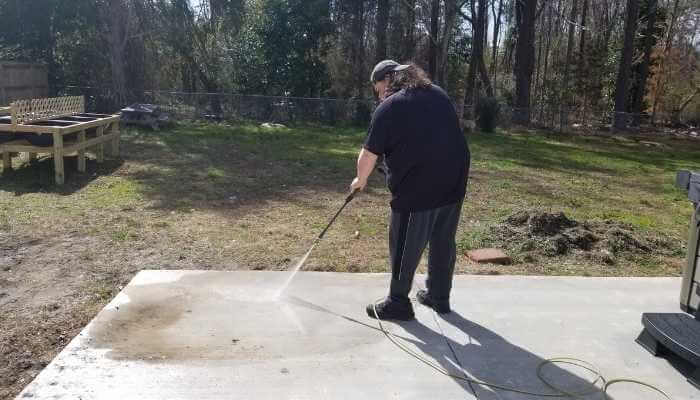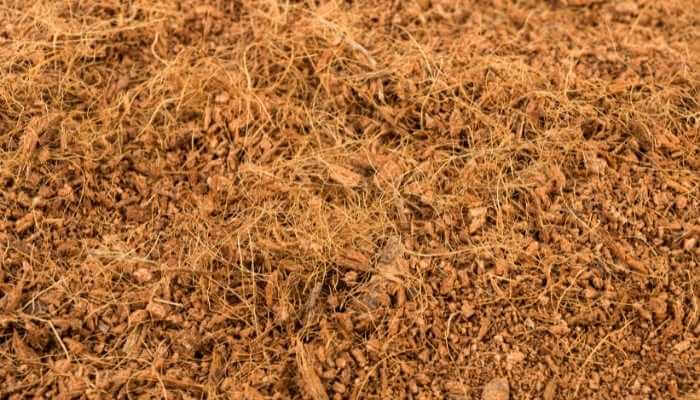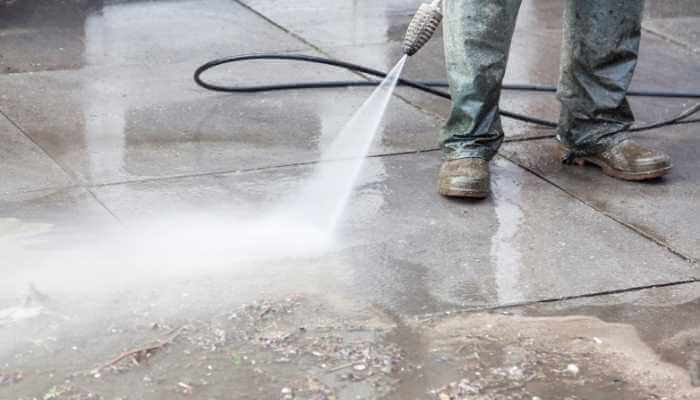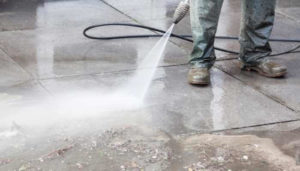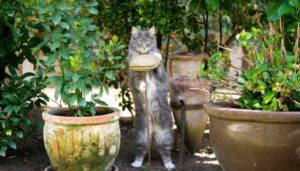
You would think since coconut coir is used for seedlings and mature plants that retain moisture – it would be good for every plant out there. But honestly, it does have limitations. And when it comes to some popular plants, coco coir might not be the best option.
Coco Coir (coconut coir/coconut peat) is an ideal substrate for seeding and leaf propagation. When mixed with other substrates or soils with nutrients it can be beneficial to plants who prefer neutral to slightly alkaline pH which includes a lot of vegetables, succulents, and orchids, among others.
Coconut coir is best known for being a growing medium that soaks up moisture quickly and then drains it just as quickly. Where this topic is concerned, well that means it can be advantageous to use it for some plants and not so great for others.
Let’s go over some common plants that coco coir is good for and then some that you should not use this substrate with.
Is Coco Coir Good for Garden Vegetables?
That depends on the vegetable. It is excellent for mixing with some potting soil and using for any vegetable that does best in neutral pH levels. Most vegetables thrive in neutral to slightly alkaline soil.
Since coco coir has a neutral pH, it is ideal for a variety of garden vegetables including:
broccoli, cabbage, cantaloupe, cauliflower, artichoke, arugula, asparagus, beet, bok choy, onion, celery, Chinese cabbage, lettuce, okra, spinach, fig, grape, plum, and pomegranate.
Be sure to use an organic fertilizer or plant food in conjunction with the coco coir to ensure that your vegetables receive all of the nutrients they require. After all, coco coir doesn’t naturally contain any nutrients. Also, it’s very light and soft. So if you are growing things like tomatoes and beans – which need support – you may have to rethink your support system.
Is Coconut Coir Good for Succulents?
If your succulents like water, coconut coir is a great soil option for them. Why? Because coco coir absorbs more water than the traditional peat that most come with. So if it’s mixed appropriately with whatever potting material you normally use, the succulent roots won’t drown, but they should be moist.
Succulents that are grown outside in a humid climate are particularly happy in coco coir. It will always retain a bit of water from the soil and atmosphere to help the succulent which works with natural watering.
Cacti and succulents grown indoors, may not do so well with coconut coir. You could easily end up overwatering your succulents and cacti. Again, it can be used so long as there is a suitable ratio of the coco coir to the type of gritty soil used – so the water is wicked away enough.
Succulents thrive in fast-draining or gritty soil. Hence having coco coir mixed into your chosen soil will keep moisture from causing rot. They also like soils that have fewer nutrients than most soils; especially nitrogen. The fact that coco coir doesn’t have any natural nutrients means there is no nitrogen to burn your plants’ roots.
Can You Use Coco Coir for Leaf Propagation?
Yes! Actually, coconut coir sometimes comes made into rooting mats and growing baskets for this purpose. You can use it for seeding new plants, for coaxing seedlings to grow a bit more and get stronger before planting, and also for leaf propagation – or taking a healthy cutting from a plant and growing another plant from it.
Coco coir can be wet thoroughly and then the growing process can begin. You probably understand seeding, but in leaf propagation, I’ve seen people wet the coconut coir completely, then roll the stem of the leaf into a mat and stick it in a cup.
More often you just have the coco coir mushed into its own form of soil and you literally plant the leaf stem into it. You just have to keep the coco coir damp and root induction will happen.
Because it works so well with root induction and seeding, it also works well with hydroponic farming, which is soilless.
Is Coco Coir Good for Houseplants?
This is the same answer I gave for vegetables. It depends on what kind of pH the houseplant (or any plant for that matter) needs. Coco coir has a neutral pH and no nutrients. Therefore you will need to mix this with some sort of potting soil and possibly add some fertilizer for those nutrients and your houseplant needs to be able to tolerate a neutral to slightly alkaline soil.
Some examples of plants that like neutral pH are: geraniums, orchids, hyacinths, morning glory, and several ferns. But you can usually find the plant’s preferred pH on their seed packets, or on the information provided when you purchase a plant, on the internet, or you can ask your retailer.
Is Coconut Coir Good for Orchids?
One houseplant that prospers in coco coir is the orchid. Obviously, just as I discussed before with the succulents, you are going to want to mix the coco coir with the other things needed to make a complete soil for the orchid. The orchid also needs proper nutrients, so that will need to be added. As most people know, raising orchids is quite an undertaking.
Orchids require moist, but not soggy growing conditions and coco coir gives them that. The long fibers quickly absorb moisture, but it also drains that liquid quickly. It can be used alone by savvy orchid growers but is usually found mixed with the appropriate custom orchid growing mix (usually 2 parts coco coir to 1 part charcoal and 1 part perlite). Each piece of this mixture does something to help the plant.
Can I Use Coco Coir Instead of Potting Soil for My Plants?
It depends upon what you plan to use it for. Let me explain. Sometimes coco coir is a base of potting soil. Sometimes the base is peat moss. The difference between just the peat or coco coir and the potting soil is – potting soil also includes other ingredients depending upon what it’s used for. Perlite and sand are in potting soil for succulents, while some have more limestone and vermiculite.
They can be used interchangeably for a lot of things, though. Seeding and leaf propagation, for instance. However, potting soil is dense and doesn’t drain off as well as coconut coir. Potting mix is not anti-fungal like coco coir.
Though coconut coir is completely sustainable and simply a byproduct of another industry, the peat used in a lot of potting mixes and soils may come from strip-mined peatlands – not good.
Now if you are referring to soil – not mix – but actual potting soil – there is a big difference. Soil has nutrients already in it. Coco coir does not. So you can water plants in soil with water and be done (so long as you don’t over-water). Growing with coco coir means adding nutrients to your water.
Things You Should Know Before Using Coconut Coir
You should always rinse the coco coir before using it. There is often salt residue on this substrate and you do not want that in your mix, or you want as little as possible.
Did you know coconut coir can be used in worm bedding? You can take the coco coir already used in other projects and add it into your composting heap or worm bin. The worms then provide a wonderful bunch of castings that can be used as a natural fertilizer.
Because it’s anti-fungal and sterile, insect pests tend to avoid it and therefore the plants in it. So that can be a benefit to using it. There are also different types of forms to choose from, so you can get what works best for your project.
When you get coconut coir, it may be compressed for easy transport. So you’ll have to soak it to get it to expand – and it will definitely expand. Usually, it will become more than twice the original size.
If you want to get some coconut coir to try out in your garden or potting mixes, it can be found at big-box stores sometimes, but most often people will order it to be delivered from online shopping.
A great option for Coconut Coir is the Mother Earth Coco Plus Perlite Mix.
FAQ
Q: What is coco coir?
A: Coco coir, also known as coco peat, is a natural growing medium made from the fiber of coconut husks. We use it as a substitute for traditional peat in horticulture and gardening applications.
For more information: https://backyardboosts.com/what-is-coconut-coir/
Q: Can coco coir be reused?
A: Yes, you can reuse coco coir multiple times before it loses its effectiveness as a growing medium.
Q: How do I clean and reuse coco coir?
A: There are several steps you can take to clean and reuse coco coir:
1. Clean the coir by sifting it through a proper screen to remove any detritus you can.
2. Clean your containers as well.
3. Wash/sterilize coco coir in treated water for 24-48 hours to remove any remaining detritus that may spread disease. Organic growers must use heat/pasteurization.
4. Rinse the coco coir in distilled water to remove excess salts.
5. Buffer the coco coir with a new enzyme/nutrient formula
6. Add it to other substrates and prepare it for use
This is just a very brief answer. For more information: https://backyardboosts.com/how-to-clean-and-reuse-coco-coir/
Q: What is the benefit of reusing coco coir?
A: Reusing coco coir has several benefits:
1. It is cost-effective as you don’t need to buy new coco coir for each planting cycle.
2. It is eco-conscious as it reduces waste by extending the life of the coco coir.
3. Reconditioning the coco coir can create more enzymes that benefit plant growth.
4. It allows you to maintain a consistent root zone by reusing familiar coco coir.
Q: How long can coco coir last?
A: The lifespan of coco coir depends on various factors such as the quality of the coco coir, how you use it, and how well you maintain it. With proper reconditioning and care, coco coir can last for multiple growing cycles.
Once processed, coconut coir can take a minimum of 20 years to decompose. If it’s not processed into pith but left fibrous or in chip form, it can take even longer.
Q: Can I use coco coir in hydroponic systems?
A: Yes, you can use coco coir as a growing medium in hydroponic systems. Its ability to retain moisture and provide excellent drainage makes it an ideal choice for hydroponic gardening.
But you cannot use it alone, as you will need to add nutrients for plant growth. Also, you cannot assume someone rinsed it appropriately. Often coco coir comes with extra salt so you should clean or rinse it before use. These things are very important before using this as a substrate for hydroponics.
For more information: https://backyardboosts.com/8-great-uses-for-coconut-core-substrate/
Q: How do enzymes transform root material in coco coir?
A: Enzymes are biological catalysts that break down complex compounds. In coco coir, enzymes break down root material from previous crops. This makes it easier for new plants to establish themselves and absorb nutrients. This is a vital step in the washing and reusing process.
Q: How do I choose the right coco coir for my plants?
A: When choosing a coco coir, consider factors such as the source of the coco coir, the composition, and the presence of any additional treatments or additives. Opt for coco coir that is specially formulated for your specific plants and growing conditions.
Q: How do I give coco coir to my plants?
A: To use coco coir as a growing medium for your plants, simply fill a pot or container with the coco coir, plant your seedlings or plants, and water them regularly. Coco coir provides excellent water retention and drainage properties. This creates an ideal environment for plant growth.
However, it contains no pH, and sometimes has a high salt content and no nutrients. So you have to make sure it’s rinsed and that you add enzymes and nutrients beyond the seedling stage.
Q: What should I do with the old coco coir after reusing it?
A: After reusing coco coir, you can compost it or mix it with other organic materials to create nutrient-rich soil amendments. Coco coir’s fibrous structure helps improve soil structure and moisture retention in compost or garden beds. It’s great for worm beds, too!
For more information: https://backyardboosts.com/is-coconut-coir-good-for-worms/

